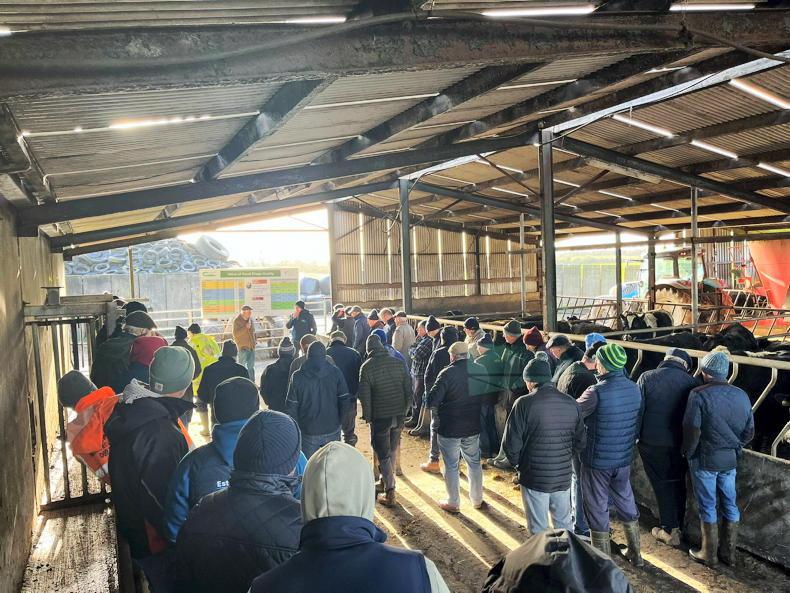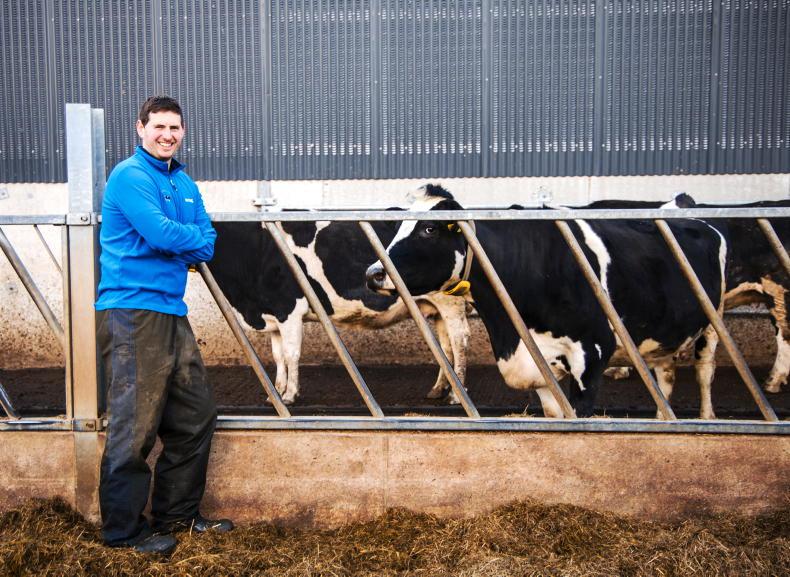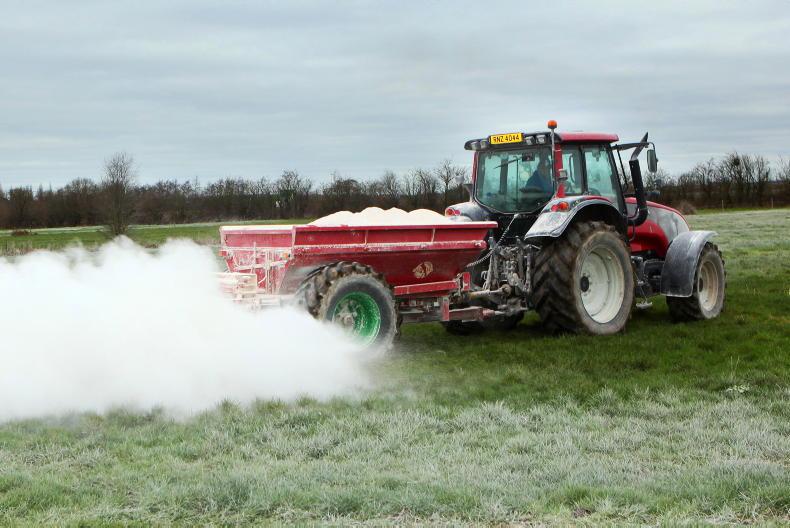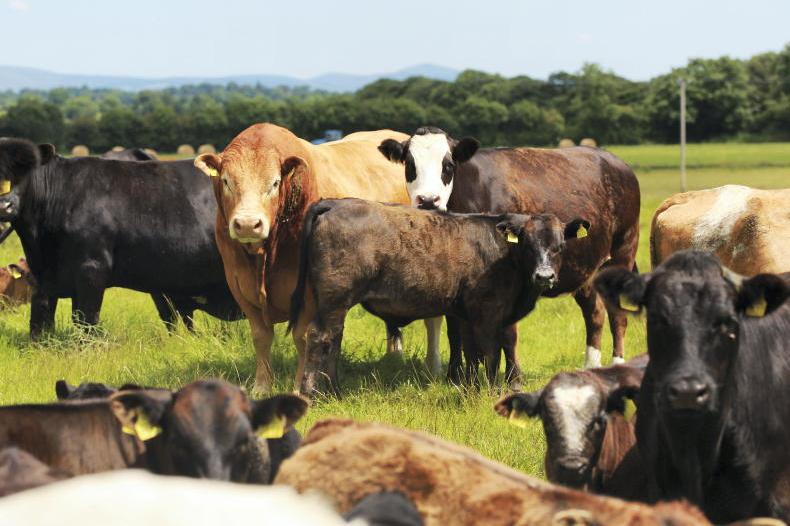Silage makes up the largest proportion of winter feed fed on drystock farms in Ireland. It represents a large cost on farms each year, in terms of growing it, ensiling it and feeding it, and yet it doesn’t seem to get the attention it deserves on many drystock farms. A suckler farmer with 60 suckler cows finishing all animals at 24 months will require close to 800t of silage for a six-month winter. At current prices, this volume of silage could be valued at €40,000, depending on quality.
Fertiliser prices are more than double what they were this time last year and this coupled with higher diesel costs will mean silage making costs will increase a lot in 2023. Testing silage and knowing what you have and how to manage it in 2022/2023 is critical.
If you ask farmers what the protein content of their winter ration is, they will most likely know it – however when asked the protein content of their silage, few will be able to answer.
It’s a simple test that can be carried out by most feed companies for clients to determine silage quality. It will cost in the region of €20-€30.
Taking an accurate sample with a silage corer is important to get an accurate analysis. It’s important that silage testing doesn’t become a reason for meal companies to sell meal.
Get independent advice on what you need to feed and make sure you understand the results. Take a moment to assess what the result means and what you can change for next year to make better-quality silage.
Your silage report – What to look for?
Dry matter (DM)
This is the amount of silage remaining after all water has been removed. The energy and protein value of silage is quoted in percentage of DM. The higher the DM, the higher the intake of energy and protein will be for every 1kg of fresh weight silage the cow eats. In general, lower DM silage will have lower intakes and higher DM silage will have higher intakes.
pH
A well preserved silage should have a pH of between 3.8 and 4.2. Wet silage with a high pH will not keep as well and will usually indicate a silage that has not fermented well, so silage intakes will be low.
If pH is below 3.8, this can lead to acidic conditions, a sharp smell and cows throwing up “cud balls”. Dry silages can have a higher pH and good preservation.
Ammonia levels
High ammonia levels show poor preservation. This can be due to high grass nitrogen levels at cutting or low sugar, wet young grass being cut. Values of <5% indicate excellent preservation, while >15% will lead to reduced intakes.
Crude protein
This measures the protein concentration of the silage. Young, leafy reseeded swards will have higher protein values. Inadequate fertiliser applications can lead to lower protein levels. Values over 15% indicate young, leafy swards.
ME (MJ/kg DM)
This is the amount of energy in the silage. Young grass will have the highest energy while mature grass will have lowest. The younger and dryer the grass, the more energy the silage will supply for milk production and liveweight gain.
DMD value
This is a measure of the feeding value of the silage expressed as a percentage. Late cut old swards can have a DMD as low as 55DMD, while excellent leafy silage can be more than 75DMD. Silage with a high DMD will be digested quicker and lead to higher intakes.
Lactic acid percentage
Bacteria in fresh silage uses grass sugar to make lactic acid, which aids the ensiling process by pickling the silage. Cutting young grass in sunny conditions will lead to high lactic acid percentage. A well preserved stable silage will have a high percentage of lactic acid. Levels of 8-10% are classified as very good.
Neutral Detergent Fibre (NDF)
This is a measure of the total fibre content in the silage. Late cut mature stemmy silage will have a high NDF.
Young grass: 45-50%.Average: 55%.Mature grass: 60-65%.Intake value
This is a relative measure of the likely intake of silage. Hillborough Feeding Information Service (HFIS) is the unit measure for beef cattle. This can range from 50-105 – a higher figure indicates high DM, high DMD and low ammonia.
Silage makes up the largest proportion of winter feed fed on drystock farms in Ireland. It represents a large cost on farms each year, in terms of growing it, ensiling it and feeding it, and yet it doesn’t seem to get the attention it deserves on many drystock farms. A suckler farmer with 60 suckler cows finishing all animals at 24 months will require close to 800t of silage for a six-month winter. At current prices, this volume of silage could be valued at €40,000, depending on quality.
Fertiliser prices are more than double what they were this time last year and this coupled with higher diesel costs will mean silage making costs will increase a lot in 2023. Testing silage and knowing what you have and how to manage it in 2022/2023 is critical.
If you ask farmers what the protein content of their winter ration is, they will most likely know it – however when asked the protein content of their silage, few will be able to answer.
It’s a simple test that can be carried out by most feed companies for clients to determine silage quality. It will cost in the region of €20-€30.
Taking an accurate sample with a silage corer is important to get an accurate analysis. It’s important that silage testing doesn’t become a reason for meal companies to sell meal.
Get independent advice on what you need to feed and make sure you understand the results. Take a moment to assess what the result means and what you can change for next year to make better-quality silage.
Your silage report – What to look for?
Dry matter (DM)
This is the amount of silage remaining after all water has been removed. The energy and protein value of silage is quoted in percentage of DM. The higher the DM, the higher the intake of energy and protein will be for every 1kg of fresh weight silage the cow eats. In general, lower DM silage will have lower intakes and higher DM silage will have higher intakes.
pH
A well preserved silage should have a pH of between 3.8 and 4.2. Wet silage with a high pH will not keep as well and will usually indicate a silage that has not fermented well, so silage intakes will be low.
If pH is below 3.8, this can lead to acidic conditions, a sharp smell and cows throwing up “cud balls”. Dry silages can have a higher pH and good preservation.
Ammonia levels
High ammonia levels show poor preservation. This can be due to high grass nitrogen levels at cutting or low sugar, wet young grass being cut. Values of <5% indicate excellent preservation, while >15% will lead to reduced intakes.
Crude protein
This measures the protein concentration of the silage. Young, leafy reseeded swards will have higher protein values. Inadequate fertiliser applications can lead to lower protein levels. Values over 15% indicate young, leafy swards.
ME (MJ/kg DM)
This is the amount of energy in the silage. Young grass will have the highest energy while mature grass will have lowest. The younger and dryer the grass, the more energy the silage will supply for milk production and liveweight gain.
DMD value
This is a measure of the feeding value of the silage expressed as a percentage. Late cut old swards can have a DMD as low as 55DMD, while excellent leafy silage can be more than 75DMD. Silage with a high DMD will be digested quicker and lead to higher intakes.
Lactic acid percentage
Bacteria in fresh silage uses grass sugar to make lactic acid, which aids the ensiling process by pickling the silage. Cutting young grass in sunny conditions will lead to high lactic acid percentage. A well preserved stable silage will have a high percentage of lactic acid. Levels of 8-10% are classified as very good.
Neutral Detergent Fibre (NDF)
This is a measure of the total fibre content in the silage. Late cut mature stemmy silage will have a high NDF.
Young grass: 45-50%.Average: 55%.Mature grass: 60-65%.Intake value
This is a relative measure of the likely intake of silage. Hillborough Feeding Information Service (HFIS) is the unit measure for beef cattle. This can range from 50-105 – a higher figure indicates high DM, high DMD and low ammonia.










SHARING OPTIONS